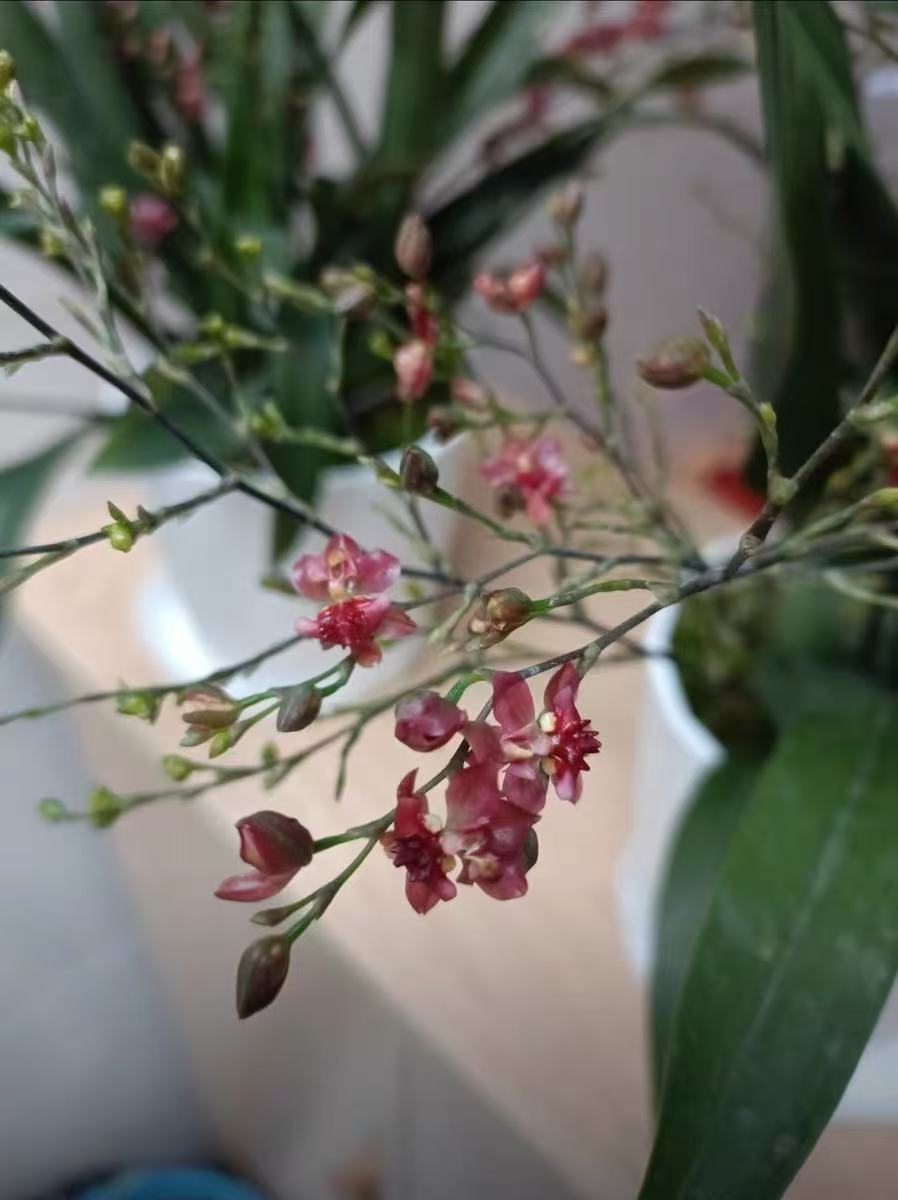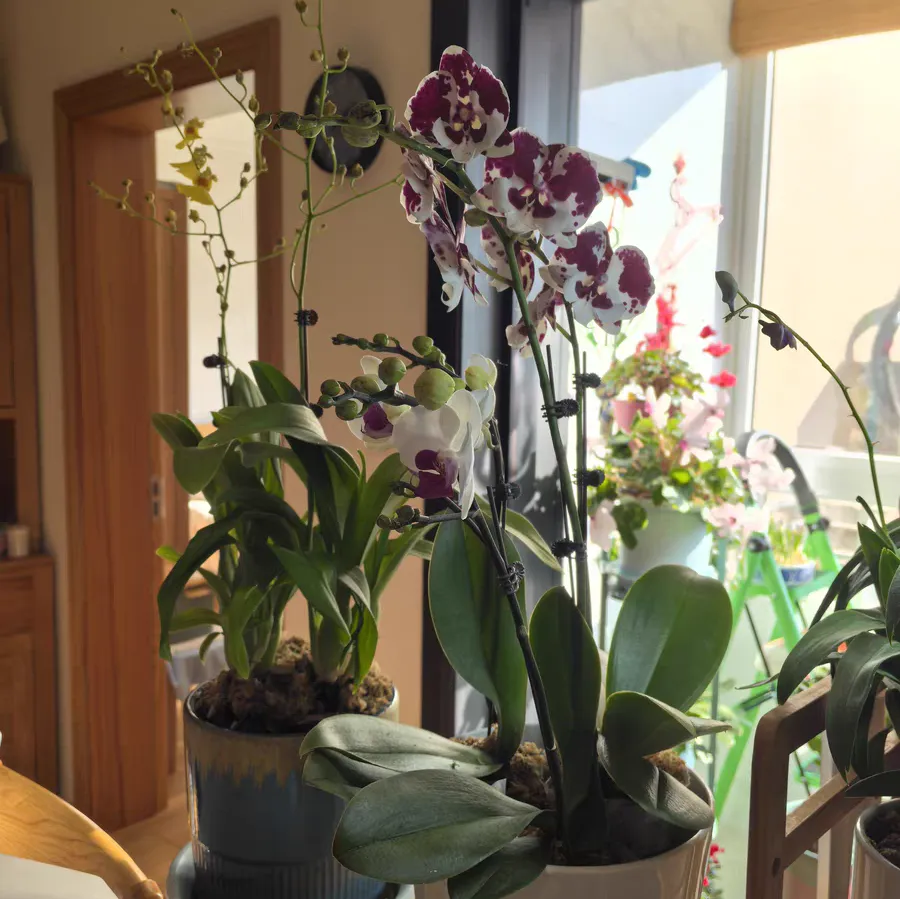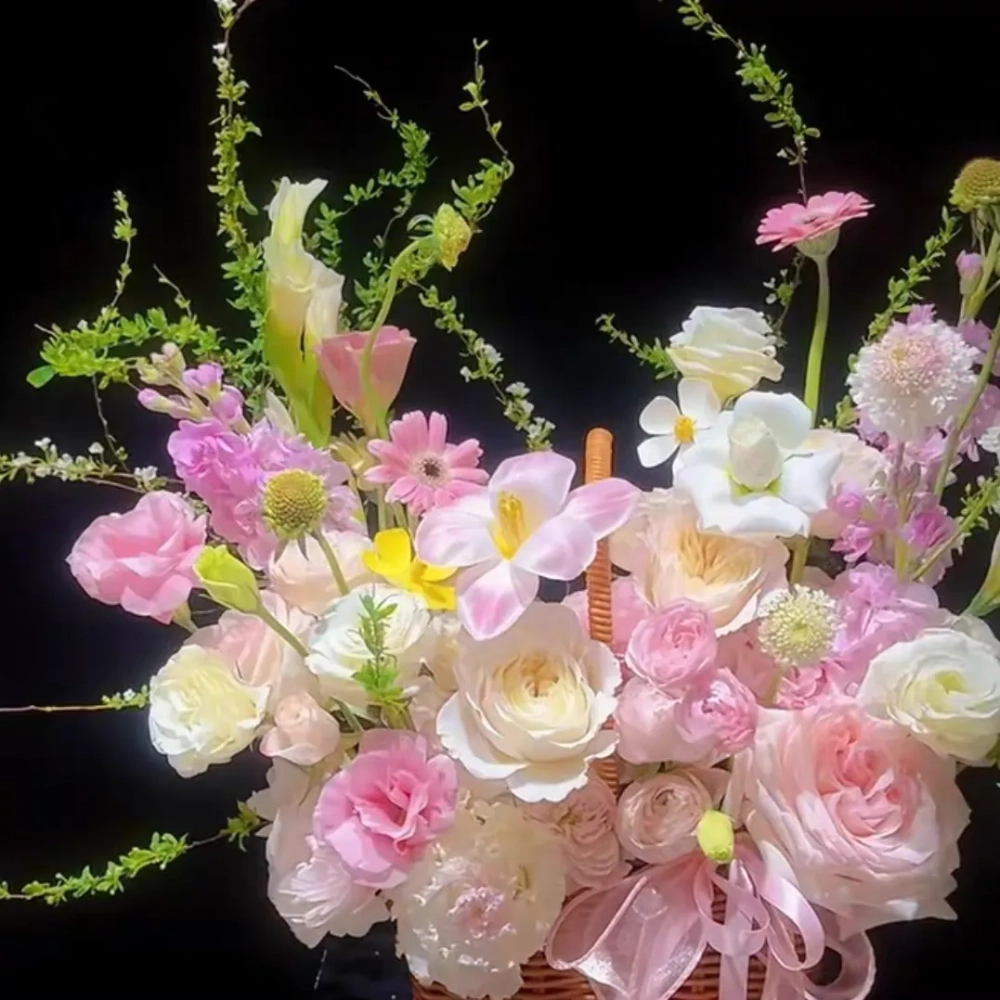As an epiphytic herbaceous plant of the genus Phalaenopsis in the Orchidaceae family, Phalaenopsis stobartiana has drawn much attention for its unique beauty and rarity. Many people may be curious about whether Phalaenopsis stobartiana is valuable and how to care for it.
The value of Phalaenopsis stobartiana mainly lies in its ornamental and rare characteristics. As an epiphytic herb, the inflorescence of Phalaenopsis stobartiana grows laterally from the base of the stem, often erect and unbranched. The bracts are ovate - triangular, and the flowers are open and brightly colored. This unique form and beautiful flowers make Phalaenopsis stobartiana a favorite among many flower enthusiasts. At the same time, due to its harsh growth conditions in the natural environment, its quantity is relatively scarce, so it also has a certain degree of rarity. In addition, Phalaenopsis stobartiana is a first - class protected wild plant in China, which further enhances its value and conservation significance.
Although Phalaenopsis stobartiana is of high value, as long as we master the correct maintenance methods, we can also enjoy its beauty at home. Here are some key maintenance tips:
Cultivation Medium: The cultivation medium for Phalaenopsis stobartiana needs to have good water - retention and drainage properties. Generally, it is not cultivated in soil, but is prepared with sphagnum moss, bark shreds, ceramsite, charcoal, etc. It should be noted that the sphagnum moss medium is prone to decay, so the cultivation medium needs to be replaced regularly.
Appropriate Watering: Spring and summer are the peak growth seasons of Phalaenopsis stobartiana. Water it once a day and spray the leaves 2 - 3 times to maintain the humidity of the plant. In autumn and winter, as the temperature drops, the amount of water should be reduced accordingly. On average, water it once every 2 - 5 days, and avoid spraying the leaves. Just keep the medium slightly moist.
Proper Lighting: Phalaenopsis stobartiana prefers a semi - shaded environment and is suitable for scattered sunlight. Therefore, in summer, appropriate shading is required to prevent the leaves from being burned by strong light. Usually, it is best to expose Phalaenopsis stobartiana to the gentle sunlight in the morning and evening. When placed indoors, it can be placed in a place with sufficient scattered sunlight.
Temperature Control: The most suitable growth temperature for Phalaenopsis stobartiana is around 18 - 28°C. As a subtropical plant, Phalaenopsis stobartiana is very sensitive to cold, and the winter temperature should preferably not be lower than 15°C.
Reasonable Fertilization: During the peak growth season of Phalaenopsis stobartiana, apply nitrogen, phosphorus, and potassium fertilizers once a week; during the slow - growth season, apply them once a month. Before the flowering period, reduce the amount of nitrogen fertilizer applied and increase the amount of phosphorus and potassium fertilizers to promote the quantity and quality of flowering.
Through the introduction of the above maintenance methods, I believe you have a certain understanding of the maintenance of Phalaenopsis stobartiana. As long as you take good care of it, your Phalaenopsis stobartiana will surely grow healthily and bloom beautiful flowers.
Is Phalaenopsis stobartiana valuable?

Share with
Tagged in :




Leave a Reply